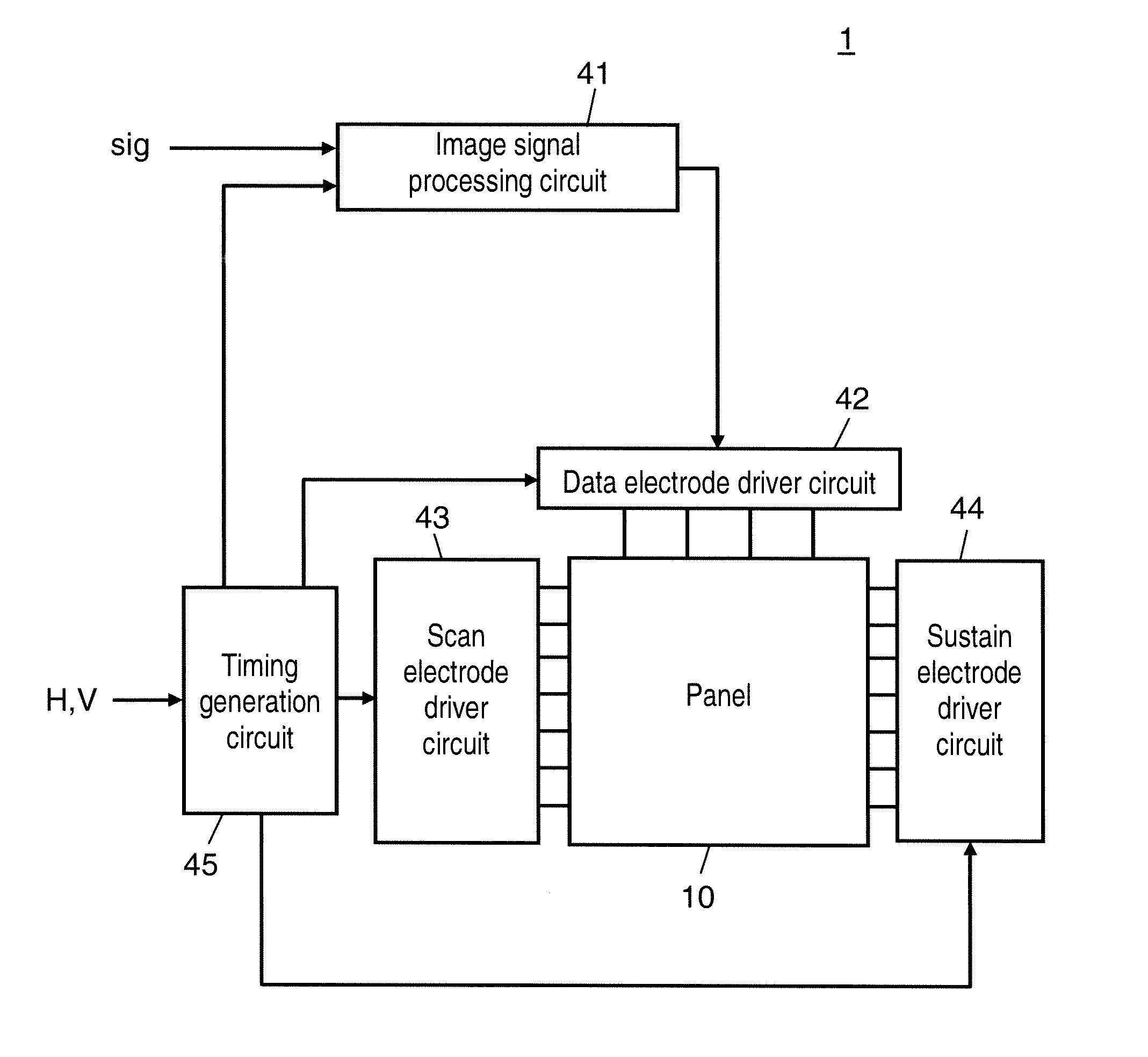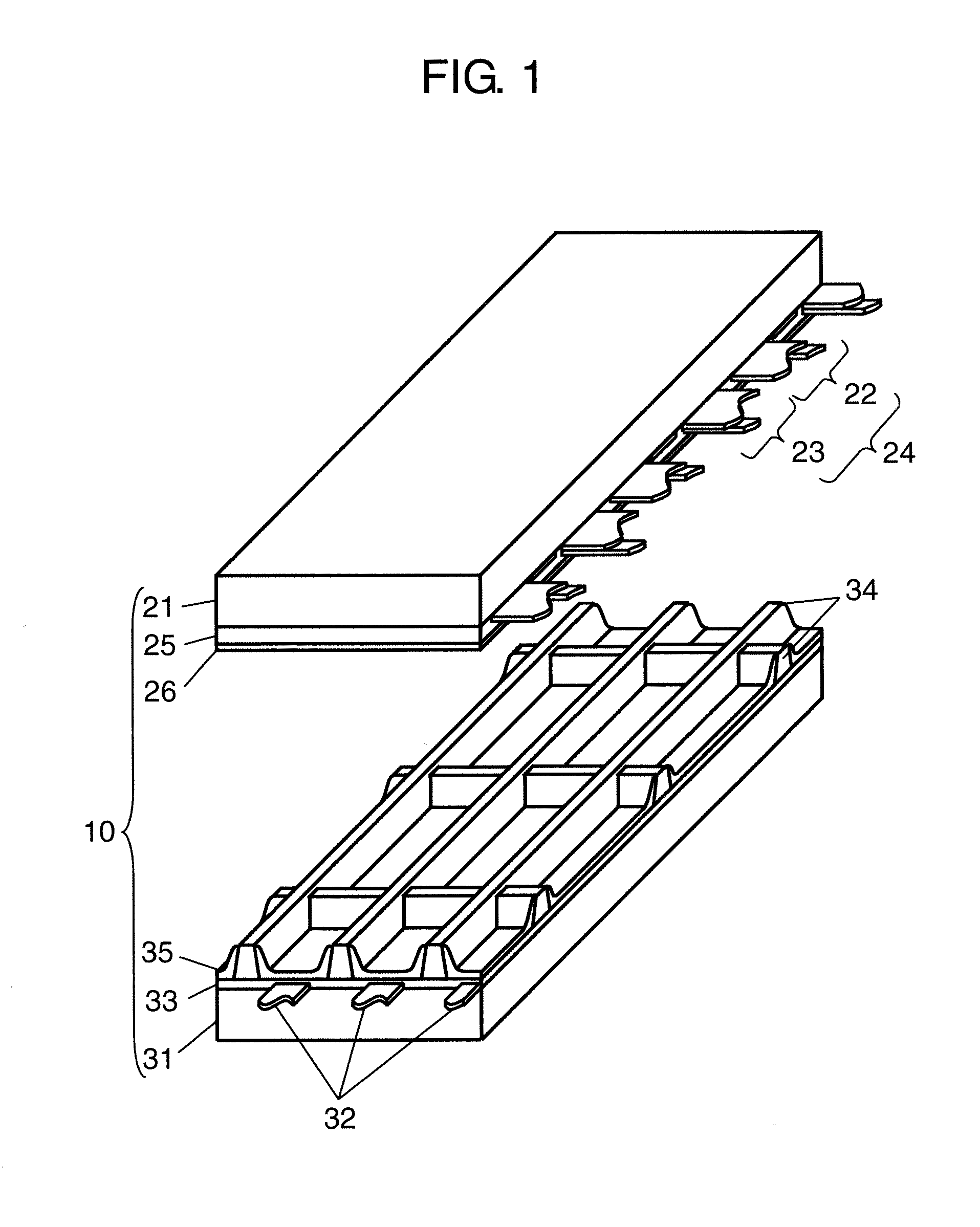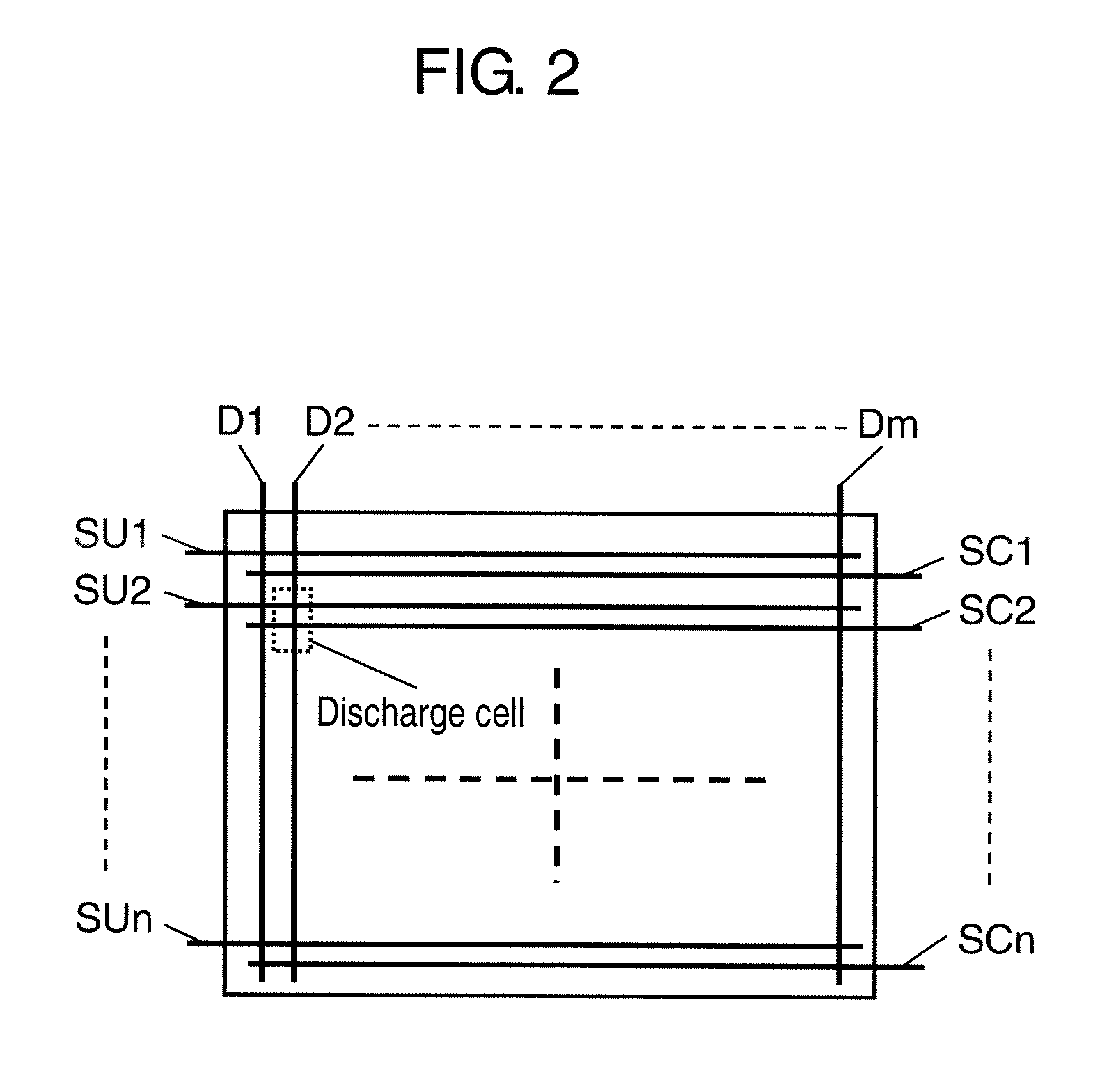Method for driving plasma display panel and plasma display device
a plasma display panel and plasma display technology, applied in the direction of instruments, computing, electric digital data processing, etc., can solve the problems of non-uniform display luminance and damage to image display quality, and achieve the effect of preventing luminance reduction of display image, reducing afterimage phenomenon, and reducing the strength level of afterimag
- Summary
- Abstract
- Description
- Claims
- Application Information
AI Technical Summary
Benefits of technology
Problems solved by technology
Method used
Image
Examples
first exemplary embodiment
[0092]FIG. 1 is an exploded perspective view showing the structure of panel 10 used in a plasma display apparatus in accordance with a first exemplary embodiment of the present invention. A plurality of display electrode pairs 24 formed of scan electrodes 22 and sustain electrodes 23 is disposed on glass-made front plate 21. Dielectric layer 25 is formed so as to cover scan electrodes 22 and sustain electrodes 23, and protective layer 26 is formed on dielectric layer 25. Protective layer 26 is made of a material mainly made of magnesium oxide (MgO).
[0093]A plurality of data electrodes 32 is formed on rear plate 31, dielectric layer 33 is formed so as to cover data electrodes 32, and mesh barrier ribs 34 are formed on dielectric layer 33. Phosphor layers 35 for emitting lights of respective colors of red (R), green (G), and blue (B) are formed on the side surfaces of barrier ribs 34 and on dielectric layer 33.
[0094]Front plate 21 and rear plate 31 face to each other so that display e...
second exemplary embodiment
[0206]In the first exemplary embodiment, the configuration has been described where the luminance gradation value is changed in response to the afterimage strength level of each pixel. However, the following configuration may be employed: when an afterimage phenomenon occurs, the luminance gradation value is changed in response to the afterimage strength level only in a pixel where the luminance gradation value is high (the pixel having a luminance gradation value equal to a predetermined high luminance threshold or higher) and the conspicuous afterimage phenomenon occurs.
[0207]FIG. 10 is a circuit block diagram showing one configuration example of correcting circuit 83 in accordance with a second exemplary embodiment of the present invention. In the second exemplary embodiment, the procedure until the afterimage strength level of each pixel is calculated is similar to that of the first exemplary embodiment, so that only correcting circuit 83 having a configuration different from th...
third exemplary embodiment
[0216]In an image where average picture level (hereinafter referred to as “APL”) during display is high, the luminance is high in whole, hence variation in luminance between adjacent pixels is small, and the number of edges is also small. In other words, in an image of high APL, an afterimage phenomenon is considered to hardly occur comparing with an image of low APL. Therefore, the following configuration may be employed: the APL of an image signal is detected, and the afterimage strength level is changed in response to the APL so that the afterimage strength level is lower when the APL is high than when the APL is low.
[0217]FIG. 11 is a circuit block diagram showing one configuration example of correcting circuit 84 in accordance with a third exemplary embodiment of the present invention. In the third exemplary embodiment, the procedure until the afterimage strength level of each pixel is calculated is similar to that of the first exemplary embodiment, so that only correcting circ...
PUM
 Login to View More
Login to View More Abstract
Description
Claims
Application Information
 Login to View More
Login to View More - R&D
- Intellectual Property
- Life Sciences
- Materials
- Tech Scout
- Unparalleled Data Quality
- Higher Quality Content
- 60% Fewer Hallucinations
Browse by: Latest US Patents, China's latest patents, Technical Efficacy Thesaurus, Application Domain, Technology Topic, Popular Technical Reports.
© 2025 PatSnap. All rights reserved.Legal|Privacy policy|Modern Slavery Act Transparency Statement|Sitemap|About US| Contact US: help@patsnap.com



